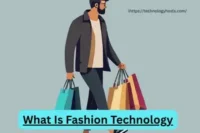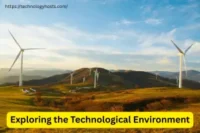What is Green Technology? A Guide to Sustainable Solutions
Published: 02 Feb 2025
As the world faces the challenges of climate change, pollution, and resource depletion, green technology has emerged as a crucial solution for a sustainable future. But what exactly is green technology? At its core, it refers to innovations and systems designed to minimize environmental impact by using renewable resources, improving energy efficiency, and reducing waste.
From solar panels to electric vehicles, green technology is reshaping industries and our daily lives. In this article, we’ll explore how green technology works, its benefits, and why it’s essential for building a cleaner, more sustainable world.

What is Green Technology?
Green technology, often referred to as eco-technology or environmentally sustainable technology, involves the development and application of innovative solutions that have a minimal impact on the environment. The goal of green technology is to protect the natural world, ensure resource efficiency, and reduce harm to the planet while meeting the needs of modern society. what is information technology
At its core, green technology is all about creating sustainable solutions that can be integrated into different sectors, such as energy, agriculture, transportation, and manufacturing, to help reduce carbon footprints and reliance on non-renewable resources.
Key elements of green technology include
Renewable Energy Sources:
Such as solar, wind, hydro, and geothermal power.
Energy Efficiency Technologies:
Like LED lighting and energy-efficient appliances.
Waste Reduction Solutions:
Including recycling technologies and sustainable packaging.
Sustainable Agriculture:
Innovations in farming that minimize environmental impact.
Green Building Technologies:
Systems and designs that reduce energy consumption and waste.
How Does Green Technology Work?
- Harnesses energy from renewable sources.
- Converts natural resources into power.
- Improves energy efficiency.
- Stores excess energy for later use.
- Reduces waste with sustainable materials.
- Optimizes energy use through smart systems.
Sustainable Agriculture and Waste Reduction
Green technology is also making a major impact in agriculture and waste management. Innovations in vertical farming and hydroponics are allowing for more sustainable and efficient farming methods that use fewer resources while producing more food. Additionally, advances in waste-to-energy systems convert waste materials into useful energy, reducing landfills and providing an alternative energy source.

Types of Green Technology
There are several key types of green technologies that are changing industries and everyday life. Let’s take a closer look at some of them:
Renewable Energy Technologies
The most recognized form of green technology is the generation of renewable energy. These technologies are designed to harness natural resources that are inexhaustible:
Solar Energy:
Solar panels and solar farms capture sunlight and convert it into electricity or thermal energy.
Wind Energy:
Wind turbines capture wind power and convert it into electricity.
Hydropower:
The power of water in motion (rivers, waves, etc.) generates energy through turbines.
Sustainable Transportation
Transportation is a significant contributor to carbon emissions, and green technology is offering eco-friendly solutions to reduce this impact:
Electric Vehicles (EVs):
Electric cars use batteries as their power source, emitting no tailpipe pollutants and requiring less maintenance than traditional gasoline-powered cars.
Public Transportation:
Advances in public transit, such as electric buses and trains, help reduce the environmental footprint of personal travel.
Hydrogen Fuel Cells:
These are used in some vehicles as a clean alternative to gasoline, emitting only water vapor as a byproduct.
Green Building Technologies
Buildings are responsible for a large percentage of global energy consumption, but innovations in green building technology aim to make them more sustainable:
Energy-Efficient HVAC Systems:
These systems use less energy to heat and cool buildings, contributing to overall efficiency.
Green Roofs:
These are covered with plants to help reduce energy costs by insulating the building and improving air quality.
Sustainable Construction Materials:
Using recycled materials and energy-efficient designs reduces the overall carbon footprint of buildings.
Benefits of Green Technology
The benefits of green technology extend beyond environmental advantages, impacting economic and social factors as well.
Environmental Benefits
Reduces Pollution:
Green technologies reduce air, water, and soil pollution by using clean, renewable resources instead of fossil fuels.
Fights Climate Change:
By reducing carbon emissions, green technologies help mitigate the effects of global warming.
Conserves Natural Resources:
Renewable technologies use resources that do not deplete over time, unlike fossil fuels.
Economic Benefits
Reduces Energy Costs:
Over time, using green technologies like solar panels and energy-efficient appliances leads to lower energy bills.
Job Creation:
The growth of the green technology sector creates new jobs in manufacturing, research, and installation.
Energy Independence:
Countries that invest in renewable energy reduce their dependence on imported fossil fuels.
Social Benefits
Improved Health:
Reducing pollution results in cleaner air and water, contributing to healthier communities.
Sustainable Development:
Green technologies support sustainable practices that benefit both current and future generations.
Challenges and Limitations of Green Technology
- High Costs: Green tech can be expensive upfront.
- Limited Access: Not everywhere has green tech options.
- Storage Issues: Storing renewable energy is tough.
- Unpredictable: Solar and wind depend on weather.
- Infrastructure Gaps: Some places lack the needed support.
- Production Impact: Making green tech can still harm the environment.
- Slow ROI: It takes time to see savings.
- Let me know if you need anything else.
The Future of Green Technology
The future of green technology is promising, with rapid advancements making renewable energy sources like solar, wind, and hydro more affordable and efficient. As innovations continue, we can expect to see cleaner transportation, smarter waste management, and more sustainable ways to power homes and businesses. This progress will help tackle climate change, reduce our reliance on fossil fuels, and create a greener, more sustainable world for future generations.
Conclusion:
Green technology is not just about cleaner energy; it’s about creating a more sustainable, eco-friendly world for future generations. From solar panels to electric vehicles, innovations in green technology are transforming industries and how we live. As technology continues to evolve, its role in reducing environmental impact and creating sustainable solutions will only grow. The future is green, and it starts with green technology.
Quiz:
A) To increase energy consumption 🌍
B) To reduce environmental harm 🌱
C) To make technology more expensive 💰
D) To use more fossil fuels 🔋
Answer: B) To reduce environmental harm 🌱
FAQs:
Green technology includes renewable energy sources like solar panels 🌞, wind turbines 🌬️, electric vehicles 🚗⚡, and eco-friendly buildings 🏢 built with sustainable materials.
By reducing carbon emissions 🌍, using renewable energy 🌞, and promoting sustainable practices, green technology helps lower pollution and slows down global warming 🌡️, leading to a healthier planet.






